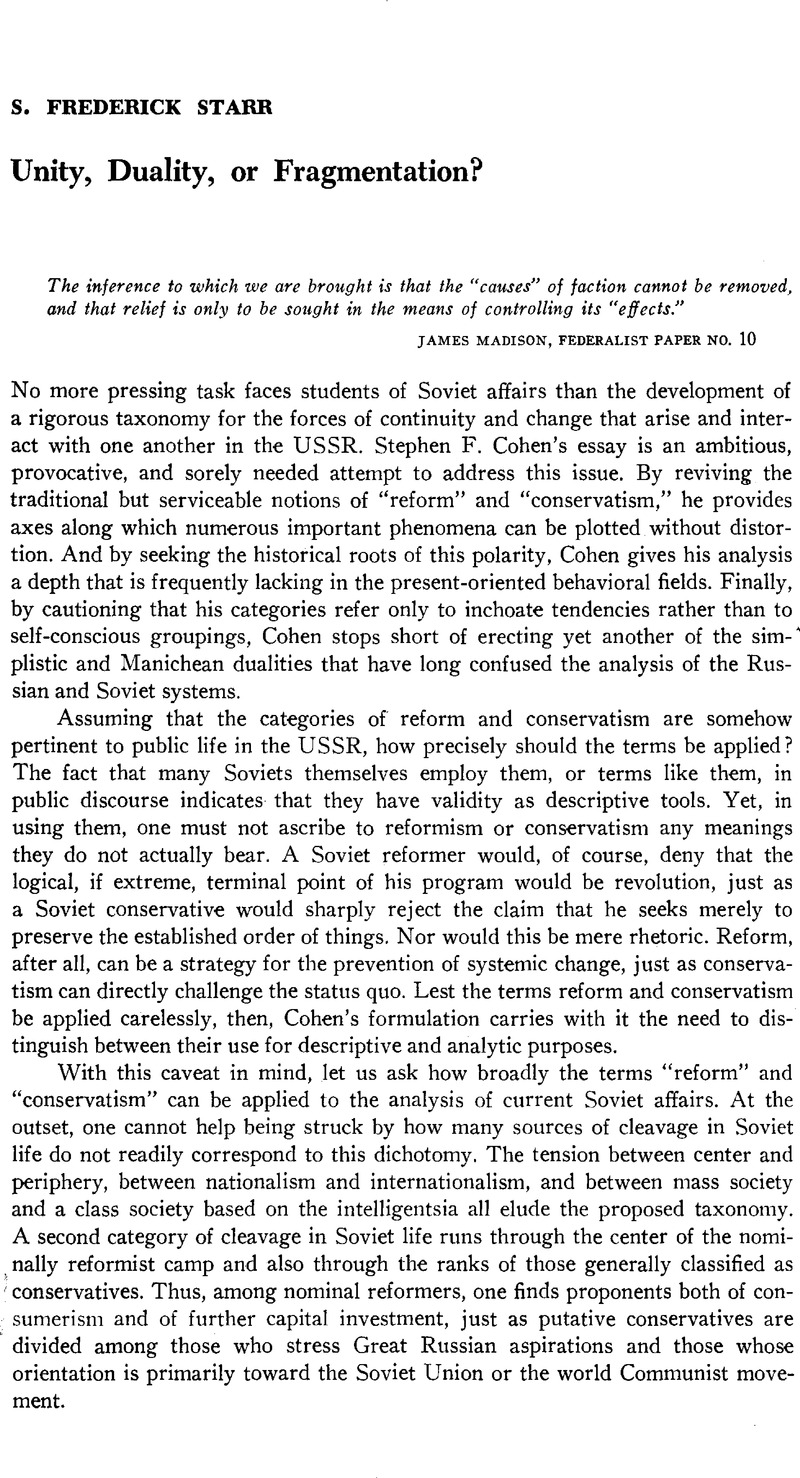Article contents
Unity, Duality, or Fragmentation?
Published online by Cambridge University Press: 27 January 2017
Abstract

- Type
- Discussion
- Information
- Copyright
- Copyright © Association for Slavic, East European, and Eurasian Studies. 1979
References
1. See Hough, Jerry F. and Fainsod, Merle, How the Soviet Union is Governed (Cambridge and London, 1979 Google Scholar [rev. and enl. ed. of Merle Fainsod, How Russia is Ruled (Cambridge, Mass., 1953)]), pp. 524 ff.
2. On “feedback” and democratic centralism, see Hoffmann, Erik P., “Information Processing in the Party: Recent Theory and Experience,” in Ryavec, Karl W., ed., Soviet Society and the Communist Party (Amherst, Mass., 1978), pp. 68 ff.Google Scholar
3. Hough and Fainsod, How the Soviet Union is Governed, p. 559.
4. Hamilton, Alexander, Jay, John and Madison, James, The Federalist (Washington, D.C., 1937), p. 57.Google Scholar
- 1
- Cited by


